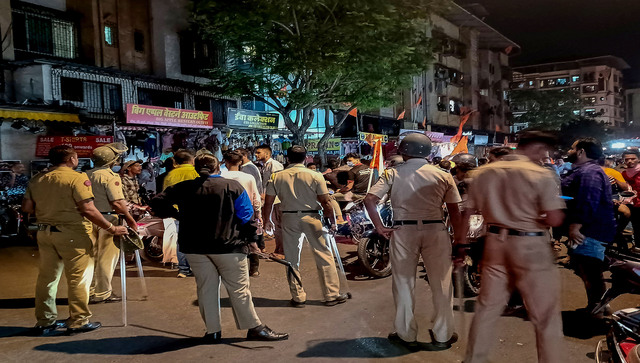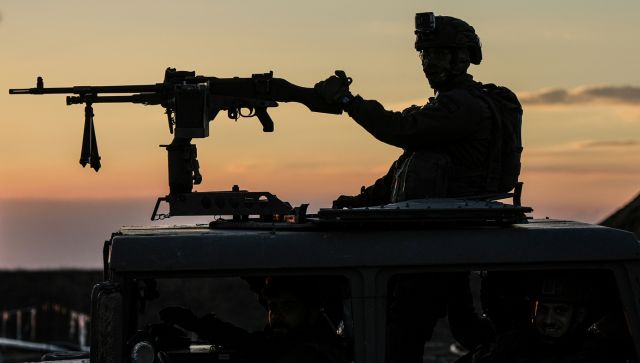A few years before the Godhra incident and the allied communal riots in Gujarat, the establishments of the International Criminal Tribunal for the former Yugoslavia (ICTY) and the International Criminal Tribunal for Rwanda (ICTR) stitched together a narrative of sexual violence in conflict situations by conceptualising that gender-based and sexual violence is a weapon of war.
In Prosecutor v. Tadic (1995), the ICTY set a ground-breaking precedent by including sexual violence as an indictable crime by an international court; and in Prosecutor v. Akayesu (1998), the ICTR recognised sexual violence as a crime against humanity, and made a causal link between the prevalence of sexual violence and the political agenda behind identity-based conflict.
Close to two decades later, in May 2017, the Bombay High Court, in the Bilkis Bano case, had an opportunity to break ground with a similar tone in its verdict. However, needless to say, the court refrained from making any such ground-breaking precedents. It dismissed the appeal filed by 11 convicts who were sentenced to life imprisonment by a trial court in 2008, after being held guilty of gang-raping Bilkis Bano, who was five months pregnant, and killing seven of her family members in the post-Godhra riots of 2002.
Hiten Venegaokar, the counsel of Central Bureau of Investigation (CBI) stated that the incident’s brutality qualified it to be considered a ‘rarest of the rare’ case and sought death penalty for the accused, thereby, enhancing the sentence of the trial court. He stated that it was a matter of communal violence, pre-planned slaughter of the family members — including an infant — of the rape victim. “This shows that the accused had no regard for law and order and were perverse,” he said. However, nowhere in 430-page judgment, does the judiciary examine the role of rape as a strategy and weapon of communal violence and aggression; neither does it set a precedent regarding the state’s responsibility and duty, during an emergency situation — in this case, the Godhra and post-Godhra riots — to keep its citizens safe and secure from violence.
A report on Women, War and Peace by Unifem states: “Men and boys as well as women and girls are the victims of this targeting, but women, much more than men, suffer gender-based violence. Their bodies become a battleground over which opposing forces struggle. Women are raped as a way to humiliate the men they are related to, who are often forced to watch the assault. In societies where ethnicity is inherited through the male line, ‘enemy’ women are forced to miscarry through violent attacks (…)”
The Indian judiciary is not afraid to adjudicate rape cases, and though it takes certain liberties during such adjudication, it, in no way, shies away from looking at the crime of rape, in context, and providing best practices and precedents through judicial interpretation. However, in the present case, the Bombay High Court assumes a painstaking, objective role, where it deliberates on the facts, the judgment by the trial court and the evidence, but remains fairly silent on the rape of Bilkis Bano. It does not, in any part of the judgment, examine the consequences of the rape as a part of communal riots, or empathise with the survivor, or even pause to comprehend the effects of sexual violence during an emergency. Most importantly, it does not question the role of the State in the rape of Bilkis, and the thousands of others whose bodies were violated in the name of community and religion — while the State could not quell the riots adequately, it did not make the journey of accessing justice any easier for a victim who for 15 years, continued to invoke institutional mechanisms to get justice.
The present case has not been considered a ‘rarest of the rare’ case. Justices VK Tahilramani and Mridula Bhatkar were the two judges of the bench of the Bombay High Court, and they persistently cited several instances to indicate that there is a thin line between an uncommon case from the rarest of the rare. The phrase “rarest of the rare case” originated in a Supreme Court decision of 1983, Machhi Singh v. State of Punjab (1983), that followed another judgment of the same court, Bachan Singh v. State of Punjab (1980), where the constitutional validity of capital punishment was upheld, with an additional caveat stating that death sentences would be accorded only in the “rarest of the rare cases”.
In Machhi Singh, the Supreme Court stated: “This involved a case of extraordinary cruelty […> In deciding on the death sentence, the court put itself in the position of the “community”, whose “collective conscience is so shocked that it will expect the holders of the judicial power centre to inflict death penalty irrespective of their personal opinion as regards desirability or otherwise of retaining death penalty.” The court also went on to list out five elements of a crime that would invoke the rarest of the rare case doctrine — the motive; the manner of commission; the magnitude; the anti-social or abhorrent nature of the crime; and the personality of the victim.
In State of UP v. Satish (2005), death penalty was upheld as the victim was a six-year-old girl, and the court’s rationale was that rape is a heinous, flagitious act in itself “becomes abnormal when the victim is a child, and reaches the lowest level of humanity when it is followed by brutal murder.” However, in Ramnaresh & Ors. vs. State of Chhatisgarh (2012), where four persons who were guests of the neighbour, raped a woman which led to her death, the Supreme Court held that, “it is unfortunate but a hard fact that all these accused have committed a heinous and inhumane crime for satisfaction of their lust but it cannot be held with certainty that this case falls in the rarest of rare cases.” Here death sentence was commuted to life imprisonment.
In the present case, however, stated that since there was no repetition of the crimes and the “accused were not history-sheeters or hard-core criminals”, it would not be given the treatment of a rarest of the rare case. The court also acknowledged that the accused, after the Godhra incident, were “boiling with revenge” and when they saw a group of Muslims, “they pounced upon them, assaulted them and also raped some women”. However, there is no sentiment by the vench in the judgment that perceives the rape as a weapon to demean, humiliate and instill fear in women of a different identity group. It looks at the rape of Bilkis Bano and the rape of thousands of women during the post-Godhra riots, as a misfortune of communal disharmony, and in this, it normalises the crime of rape as a result of uncontrolled sexual desire, when in reality, rape is about power and subjection. In fact, in the United Nations Security Council Resolution 1820, the Security Council iterates: “Women and girls are particularly targeted by the use of sexual violence, including as a tactic of war to humiliate, dominate, instill fear in, disperse and/or forcibly relocate civilian members of a community or an ethnic group.”
Rape has been deemed to be a crime against society by the judiciary, in previous cases. However, there is no state obligation cited in the judgment about taking responsibility about sexual violence committed in emergencies, conflicts, and massacres. It is in the same vein that incidents of rape in caste-based massacres in Laxmanpur Bathe and Khairlanji or large-scale sexual violence in conflict areas such as Manipur, Kunan-Poshpora and Chhattisgarh are routinely ignored by the State.
The Bombay High Court judgment does very little for Bilkis Bano, and even less for utilitarian interests by steering away from examining sexual violence, contextually, and refusing to put gender justice at the centre of its verdict.


)




)
)
)
)
)
)
)
)